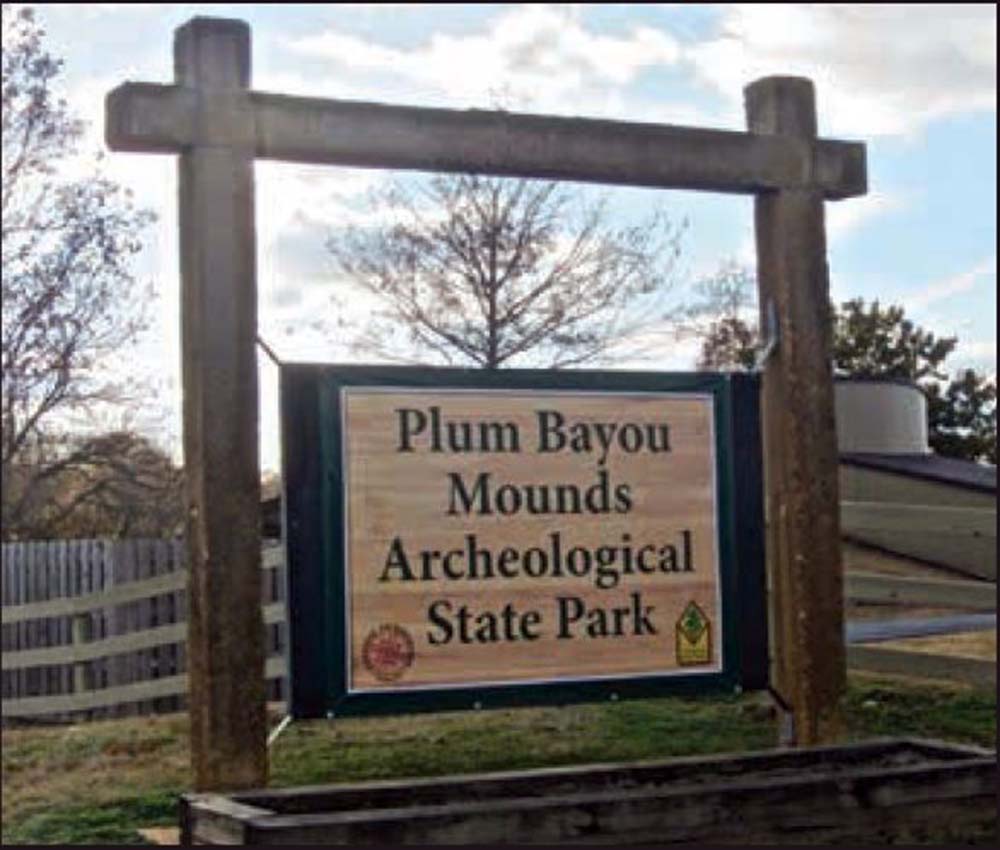Headed down U.S. 165 for a duck hunt, I'm reminded between Scott and Keo that what was once Toltec Mounds Archeological State Park is now Plum Bayou Mounds Archeological State Park.
State officials had long been in discussions with experts at the Arkansas Archeological Survey and the Quapaw Nation. A public forum was held last April to hear from area residents about changing the park's name.
"Toltec Mounds has always been a misnomer," says Shea Lewis, who oversees the 52 state parks. "Even though archaeologists have proven that the Toltecs of Mexico didn't build these mounds, they continued to be known as Toltec Mounds. The park has long noted the misidentification in interpretive materials. This name change will help provide a better understanding of the people who lived here and the importance of their culture."
During the 1800s, many mound sites in the South were thought to have been built by Toltecs. The mounds actually were built by ancestors of Native Americans who later lived in the region.
The site of the state park is a National Historic Landmark. In 1812, French explorer Louis Bringier became the first European to visit the mounds. He described the "tolerably regular" alignment of the mounds and the height of the two tallest mounds in contrast to the surrounding Delta flatlands.
William Peay Officer and his wife Mary Eliza purchased the land in 1849 and created Lake Mound Plantation. In the 1870s after William had died and Mary Eliza had remarried, Mary Eliza contacted the Smithsonian Institution in Washington, D.C., to see if it might have an interest in the site. Edward Palmer was sent to Arkansas to investigate.
According to the state Department of Parks, Heritage and Tourism: "Palmer identified the site with the Toltecs, though this conclusion was later proven in error. Research undertaken by the Arkansas Archeological Survey has linked the mounds to people of the Plum Bayou culture, who had used the site mainly for ceremonial and religious purposes from about AD 700 to 1050. The site was unprotected until 1975. It was privately owned and heavily farmed.
"The site was placed on the National Register of Historic Places in 1973, and the state began trying to acquire the property. The purchase was completed with state and federal funds in 1975. The park became a National Historic Landmark in 1978. Toltec Mounds Archeological State Park opened to the public in 1980. On April 19, 1986, 4.78 acres of archaeologically significant land was added. The area was acquired with the assistance of the Nature Conservancy."
In 2021, a state representative introduced legislation to rename the park Chief Heckaton State Park after a Quapaw chief who lived centuries after the site was discovered. The bill didn't make it out of committee. The renaming to Plum Bayou occurred in November 2022.
Trails pass through the 110-acre complex. A boardwalk allows visitors to watch wildlife at Mound Pond. There are interpretive exhibits in the visitors' center, which also houses an Arkansas Archeological Survey research station.
"Archaeologists use the name Plum Bayou culture to refer to the way of life of Native Americans who lived here," Martha Ann Rolingson writes for the Central Arkansas Library System's Encyclopedia of Arkansas. "The site was situated on the bank of an oxbow lake that was part of a channel abandoned by the Arkansas River. Three sides of the site were bounded by a ditch and a 10-foot-high earthen embankment. The site was the primary religious center for people who lived in the countryside.
"Only a few of the religious leaders lived at the site, but it was used for ceremonies. Plum Bayou people were farmers who grew domesticated plants, mainly maygrass, little barley, amaranth and cenopodium. They hunted deer, turkey and other animals. They also fished and gathered nuts and wild plants. ... There are no clues as to why the site was abandoned about 1050 or where the Plum Bayou people went. Later Native Americans of the Mississippian Period occasionally used the site for ceremonies or rituals and placed burials in the mounds."
Palmer's 1878 Smithsonian study was followed by investigations by archaeologists from the Peabody Museum at Harvard University and the Smithsonian's Bureau of Ethnology in 1879 and 1882.
"The three reports provided important descriptions of the site," Rolingson writes. "In subsequent years, other archaeologists visited. When none of them discovered whole pottery vessels or other distinctive artifacts, interest languished. The mounds were gradually reduced in height by plowing after farming began in the area in the 1850s. Several mounds were deliberately leveled in the 1960s. Most of them are no longer visible, though remnants survived."
People in the 1800s thought the Native Americans of the eastern United States weren't advanced enough to build such mounds. According to Rolingson, the Toltecs and Aztecs in Mexico were associated with civilization and ceremonial mounds.
"A popular theory was that these tribes once lived in North America north of Mexico and built mounds," she writes. "Research by the Bureau of Ethnology provided evidence that mounds were built by the ancestors of local Indians and not by Toltecs and Aztecs. In 1888, when a railroad was built near the mounds, landowners Gilbert Knapp, Mary Eliza Knapp and her son Eustis Officer named the railway station Toltec. The name continues to be used by people living in the area."
Senior Editor Rex Nelson's column appears regularly in the Arkansas Democrat-Gazette. He's also the author of the Southern Fried blog at rexnelsonsouthernfried.com.


